Abstract
Despite significant improvements in early detection and refinements of therapeutic protocols over the last several decades, cancer remains one of the leading causes of death in North America. In particular, treatment of metastatic cancers is a highly desirable and yet still elusive goal of the oncologist. One strategy which holds promise is the use of self replicating viral strains with the ability to specifically kill tumour but not normal cells. These so-called “oncolytic viruses” are in general, attenuated for growth in normal cells but are able to exploit tumour specific, genetic defects to gain a growth advantage. In this review, we will discuss the virus:host cell interactions which help form the niche occupied by oncolytic viruses. The current and potential clinical applications / limitations will be discussed for oncolytic viruses from the herpesvirus, adenoviruses, picornavirus, rhabdovirus, and paramyxovirus families.
Keywords: Oncolytic Viruses, Tumour Hunters, Paramyxoviruses, Fibre Knob
Current Gene Therapy
Title: Oncolytic Viruses: Programmable Tumour Hunters
Volume: 2 Issue: 2
Author(s): J. C. Bell, K. A. Garson, B. D. Lichty and F. D. Stojdl
Affiliation:
Keywords: Oncolytic Viruses, Tumour Hunters, Paramyxoviruses, Fibre Knob
Abstract: Despite significant improvements in early detection and refinements of therapeutic protocols over the last several decades, cancer remains one of the leading causes of death in North America. In particular, treatment of metastatic cancers is a highly desirable and yet still elusive goal of the oncologist. One strategy which holds promise is the use of self replicating viral strains with the ability to specifically kill tumour but not normal cells. These so-called “oncolytic viruses” are in general, attenuated for growth in normal cells but are able to exploit tumour specific, genetic defects to gain a growth advantage. In this review, we will discuss the virus:host cell interactions which help form the niche occupied by oncolytic viruses. The current and potential clinical applications / limitations will be discussed for oncolytic viruses from the herpesvirus, adenoviruses, picornavirus, rhabdovirus, and paramyxovirus families.
Export Options
About this article
Cite this article as:
Bell C. J., Garson A. K., Lichty D. B. and Stojdl D. F., Oncolytic Viruses: Programmable Tumour Hunters, Current Gene Therapy 2002; 2 (2) . https://dx.doi.org/10.2174/1566523024605582
| DOI https://dx.doi.org/10.2174/1566523024605582 |
Print ISSN 1566-5232 |
| Publisher Name Bentham Science Publisher |
Online ISSN 1875-5631 |
Call for Papers in Thematic Issues
Programmed Cell Death Genes in Oncology: Pioneering Therapeutic and Diagnostic Frontiers (BMS-CGT-2024-HT-45)
Programmed Cell Death (PCD) is recognized as a pivotal biological mechanism with far-reaching effects in the realm of cancer therapy. This complex process encompasses a variety of cell death modalities, including apoptosis, autophagic cell death, pyroptosis, and ferroptosis, each of which contributes to the intricate landscape of cancer development and ...read more
Related Journals
 7
7
- Author Guidelines
- Graphical Abstracts
- Fabricating and Stating False Information
- Research Misconduct
- Post Publication Discussions and Corrections
- Publishing Ethics and Rectitude
- Increase Visibility of Your Article
- Archiving Policies
- Peer Review Workflow
- Order Your Article Before Print
- Promote Your Article
- Manuscript Transfer Facility
- Editorial Policies
- Allegations from Whistleblowers
- Announcements
Related Articles
-
Adiposity and the Gut - The Role of Gut Hormones
Current Nutrition & Food Science Factors Modulating Fibrates Response: Therapeutic Implications and Alternative Strategies
Endocrine, Metabolic & Immune Disorders - Drug Targets Morphologic and Molecular Backgrounds for Personalized Management of Genito-Urinary Cancers: An Overview
Current Drug Targets GH-Inhibitory Activity of Novel Somatostatin Agonists: Potential Applications in Acromegaly
Current Medicinal Chemistry - Immunology, Endocrine & Metabolic Agents Heterocyclic Compounds as Anti-Inflammatory Agents
Current Bioactive Compounds Silibinin – A Promising New Treatment for Cancer
Anti-Cancer Agents in Medicinal Chemistry Targeted Delivery of Montelukast for the Treatment of Alzheimer’s Disease
CNS & Neurological Disorders - Drug Targets Processed Foods, Dysbiosis, Systemic Inflammation, and Poor Health
Current Nutrition & Food Science Ghrelin as a Potential Anti-Obesity Target
Current Pharmaceutical Design Antimicrobial Activity of Molluscan Hemocyanins from Helix and Rapana Snails
Current Pharmaceutical Biotechnology Nutritional Antioxidants and Adaptive Cell Responses: An Update
Current Molecular Medicine A Review of Molecular Predictors of Response to Neoadjuvant Chemotherapy in Muscle-invasive Bladder Cancer
Mini-Reviews in Medicinal Chemistry In Situ Gene Therapy for Prostate Cancer
Current Gene Therapy Antitumor Titanium Compounds
Mini-Reviews in Medicinal Chemistry Review on EGFR Inhibitors: Critical Updates
Mini-Reviews in Medicinal Chemistry Nano-Chitosan Particles in Anticancer Drug Delivery: An Up-to-Date Review
Mini-Reviews in Medicinal Chemistry The HOX Genes Network in Uro-Genital Cancers: Mechanisms and Potential Therapeutic Implications
Current Medicinal Chemistry Strategies for In Vivo siRNA Delivery in Cancer
Mini-Reviews in Medicinal Chemistry Network Medicine and High Throughput Screening
Current Drug Discovery Technologies From Amino Acids to Proteins as Targets for Metal-based Drugs
Current Drug Metabolism












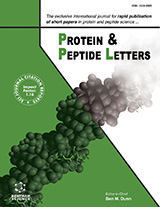
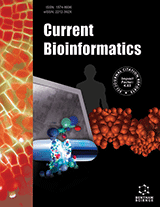
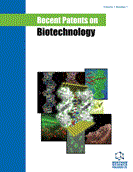
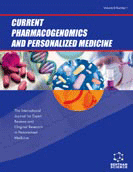
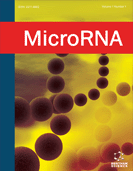
.jpeg)








